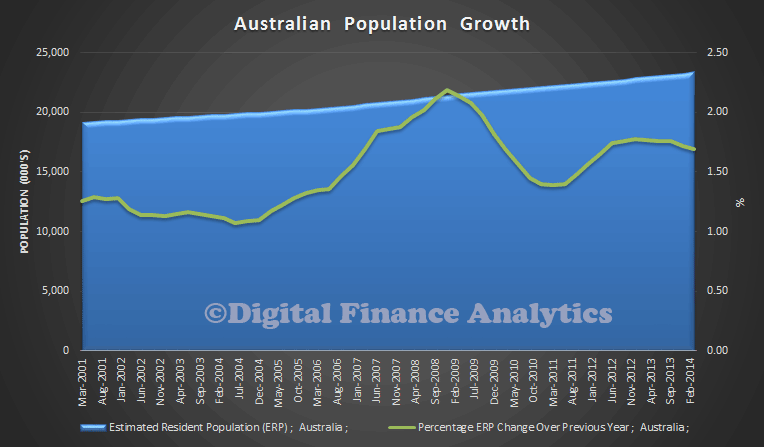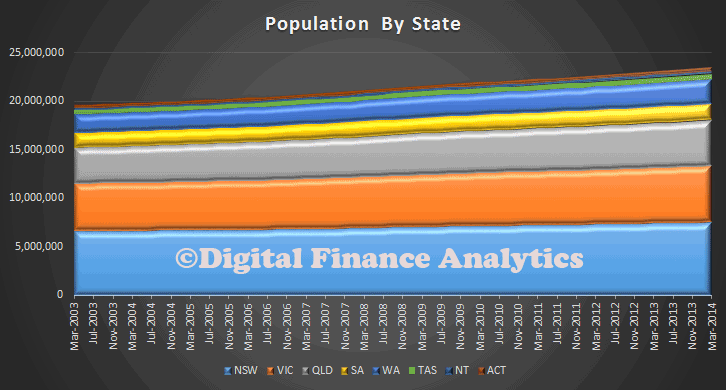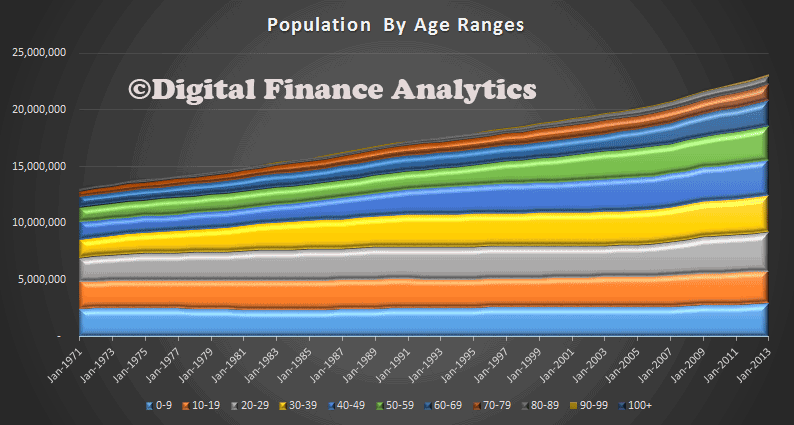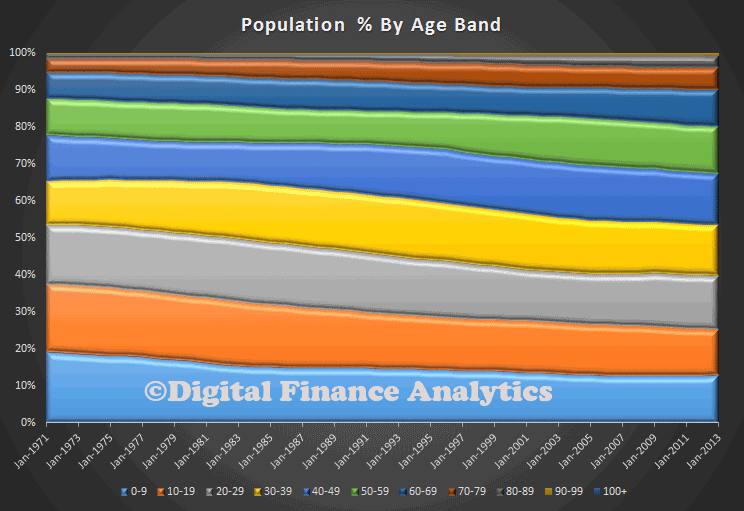The ABS just released their preliminary demographic statistics to end March 2014. Australia’s total population increased by 388,400 people to reach 23.4 million by the end of March 2014, with a growth rate of 1.7 per cent, a continuation of the average annual growth rate for the past three years. Natural increase contributed 156,900 people to Australia’s population in the year to 31 March 2014, consisting of 306,500 births and 149,600 deaths. Net overseas migration contributed 231,500 to the population over the same period, accounting for 60 per cent of Australia’s total growth.
 All states and territories recorded positive population growth in the year ended 31 March 2014. Western Australia continued to record the fastest growth rate of all states and territories at 2.5%. Tasmania recorded the slowest growth rate at 0.3%. New South Wales and Victoria continued to experience high population growth going against the trend of slowing annual growth around Australia – the population of New South Wales and Victoria grew by 114,500 and 108,800 respectively. Net overseas migration (NOM) was the main contributor to both New South Wales and Victoria’s population growth, accounting for 67 and 57 per cent of the states’ growth respectively. The NOM contribution to Victoria’s growth is below the Australian rate of 60 per cent, which highlights the recent increase in net interstate migration to the state. We’re also seeing fewer people moving to Queensland and Western Australia. Queensland recorded one of its lowest annual gains on record, slowing by 65 per cent in five years. Meanwhile, New South Wales recorded its lowest annual interstate loss in nearly 30 years and Victoria recorded its highest annual gain on record.
All states and territories recorded positive population growth in the year ended 31 March 2014. Western Australia continued to record the fastest growth rate of all states and territories at 2.5%. Tasmania recorded the slowest growth rate at 0.3%. New South Wales and Victoria continued to experience high population growth going against the trend of slowing annual growth around Australia – the population of New South Wales and Victoria grew by 114,500 and 108,800 respectively. Net overseas migration (NOM) was the main contributor to both New South Wales and Victoria’s population growth, accounting for 67 and 57 per cent of the states’ growth respectively. The NOM contribution to Victoria’s growth is below the Australian rate of 60 per cent, which highlights the recent increase in net interstate migration to the state. We’re also seeing fewer people moving to Queensland and Western Australia. Queensland recorded one of its lowest annual gains on record, slowing by 65 per cent in five years. Meanwhile, New South Wales recorded its lowest annual interstate loss in nearly 30 years and Victoria recorded its highest annual gain on record.
 There is a significant skew towards older Australians, as can be seen by the relative movement from 1971, by age bands. In fact in absolute numbers, those under 20 years grew the slowest whilst those aged 40-69 grew the fastest. This has a profound impact on the community, with those planning to retire well ahead of new workers ready to join the workforce – yet youth unemployment is very high, as we discussed recently.
There is a significant skew towards older Australians, as can be seen by the relative movement from 1971, by age bands. In fact in absolute numbers, those under 20 years grew the slowest whilst those aged 40-69 grew the fastest. This has a profound impact on the community, with those planning to retire well ahead of new workers ready to join the workforce – yet youth unemployment is very high, as we discussed recently.
 We can also look at the splits in percentage terms, which shows again these trends. In 1971, the fiftieth point was 27 years, today it is 38 years, and rising.
We can also look at the splits in percentage terms, which shows again these trends. In 1971, the fiftieth point was 27 years, today it is 38 years, and rising.


One thought on “Australian Population Now 23.4m And Ageing”